
Hendrik Elingsz van Rijgersma (born 5 January 1835 in Lemmer, Province of Friesland, the Netherlands, died 4 March 1877 in St. Martin) was a Dutch naturalist, physician, amateur botanist, malacologist and ichthyologist.

Hendrik Elingsz van Rijgersma (born 5 January 1835 in Lemmer, Province of Friesland, the Netherlands, died 4 March 1877 in St. Martin) was a Dutch naturalist, physician, amateur botanist, malacologist and ichthyologist.
Rijgersma became a physician in 1858, and practiced medicine in the small town of Jisp and on the island of Marken. In 1861 he married Maria Henriette Gräfing; they had seven children.
When slavery was abolished in the Dutch colonies in 1863, he was one of six physicians appointed to provide medical care to the liberated slaves on the island of St. Martin in the Netherlands Antilles, where he served as government physician until his untimely death at the age of 42. There he collected many fossils, plants, birds, reptiles, fishes, mollusks, crustaceans and insects.
Hendrik van Rijgersma was an excellent painter and left to posterity many, mostly unpublished, drawings, sketches and water colors of plants, shells and other subjects.
His animal collections were sent by him to the Academy of Natural Sciences of Philadelphia, of which he was a corresponding member. The plants he sent to the Berlin herbarium were destroyed. There apparently are also plants he collected at the National Herbarium of the Netherlands at Leyden. In the Swedish Museum of Natural History, there are 129 plants collected by van Rijgersma, of which 74 have illustrations.
A species of snake, Alsophis rijgersmaei , is named in his honor. [1]
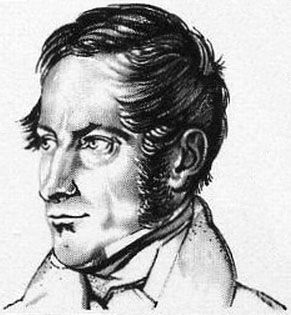
Philipp Franz Balthasar von Siebold was a German physician, botanist and traveler. He achieved prominence by his studies of Japanese flora and fauna and the introduction of Western medicine in Japan. He was the father of the first female Japanese doctor educated in Western medicine, Kusumoto Ine.
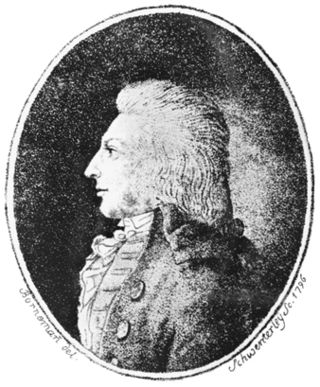
Christiaan Hendrik Persoon was a South African mycologist who made additions to Linnaeus' mushroom taxonomy.
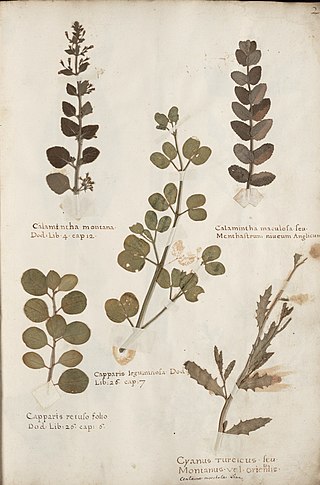
A herbarium is a collection of preserved plant specimens and associated data used for scientific study.

Carl Peter Thunberg, also known as Karl Peter von Thunberg, Carl Pehr Thunberg, or Carl Per Thunberg, was a Swedish naturalist and an "apostle" of Carl Linnaeus. After studying under Linnaeus at Uppsala University, he spent seven years travelling in southern Italy and Asia, collecting and describing people and animals new to European science, and observing local cultures. He has been called "the father of South African botany", "pioneer of Occidental Medicine in Japan", and the "Japanese Linnaeus".

Martin H[e]inrich Carl Lichtenstein was a German physician, explorer, botanist and zoologist. He explored parts of southern Africa and collected natural history specimens extensively and many new species were described from his collections by European scientists.
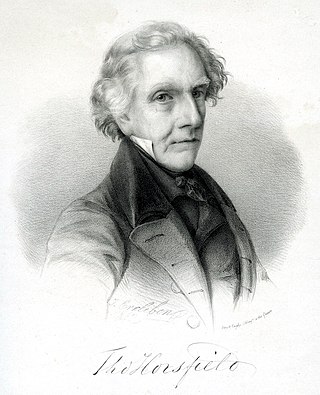
Thomas Horsfield was an American physician and naturalist who worked extensively in Indonesia, describing numerous species of plants and animals from the region. He was later a curator of the East India Company Museum in London.

Pieter Bleeker was a Dutch medical doctor, ichthyologist, and herpetologist. He was famous for the Atlas Ichthyologique des Indes Orientales Néêrlandaises, his monumental work on the fishes of East Asia published between 1862 and 1877.

Baron Sir Ferdinand Jacob Heinrich von Mueller, was a German-Australian physician, geographer, and most notably, a botanist. He was appointed government botanist for the then colony of Victoria (Australia) by Governor Charles La Trobe in 1853, and later director of the Royal Botanic Gardens, Melbourne. He also founded the National Herbarium of Victoria. He named many Australian plants.

Albertus or Albert Seba was a Dutch pharmacist, zoologist, and collector. Seba accumulated one of the largest cabinets of curiosities in the Netherlands during his time. He sold one of his cabinets in 1717 to Peter the Great of Russia. His later collections were auctioned after his death. He published descriptions of his collections in a lavishly illustrated 4 volume Thesaurus. His early work on taxonomy and natural history influenced Linnaeus.
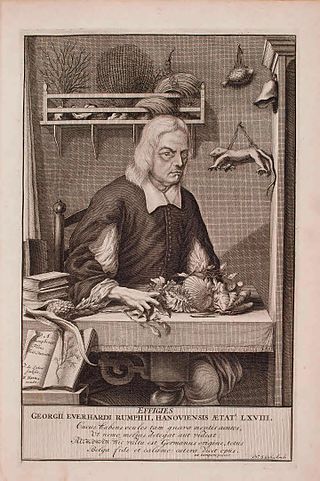
Georg Eberhard Rumphius was a German-born botanist employed by the Dutch East India Company in what is now eastern Indonesia, and is best known for his work Herbarium Amboinense produced in the face of severe personal tragedies, including the death of his wife and a daughter in an earthquake, going blind from glaucoma, loss of his library and manuscripts in major fire, and losing early copies of his book when the ship carrying it was sunk.

Martin(us) van Marum was a Dutch physician, inventor, scientist and teacher, who studied medicine and philosophy in Groningen. Van Marum introduced modern chemistry in the Netherlands after the theories of Lavoisier, and several scientific applications for general use. He became famous for his demonstrations with instruments, most notable the Large electricity machine, to show statical electricity and chemical experiments while curator for the Teylers Museum.

Caspar Georg Carl Reinwardt was a Prussian-born Dutch botanist. He is considered to be the founding father of Bogor Botanical Garden in Indonesia.

Paul Hermann was a German-born physician and botanist who for 15 years was director of the Hortus Botanicus Leiden.

Hugh Cuming was an English collector who was interested in natural history, particularly in conchology and botany. He has been described as the "Prince of Collectors".
The history of phycology is the history of the scientific study of algae. Human interest in plants as food goes back into the origins of the species, and knowledge of algae can be traced back more than two thousand years. However, only in the last three hundred years has that knowledge evolved into a rapidly developing science.

The Leeward Island racer is a species of snake in the family Colubridae. The species is found in Anguilla, Saint Barthélemy, and is probably extirpated from Sint Maarten.
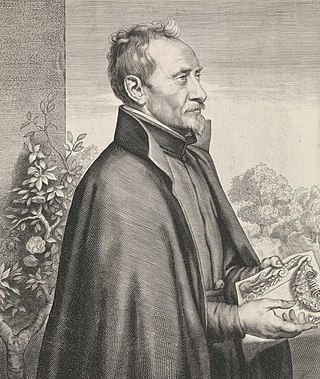
Daniël Seghers or Daniel Seghers was a Flemish Jesuit brother and painter who specialized in flower still lifes. He is particularly well known for his contributions to the genre of flower garland painting. His paintings were collected enthusiastically by aristocratic patrons and he had numerous followers and imitators.

Willem Hendrik de Vriese was a Dutch botanist and physician born in Oosterhout, North Brabant.
Professor Karl Heinz Rechinger HonFRSE was an Austrian botanist and phytogeographer.

François Paul Louis Pollen (1842–1886) was a Dutch naturalist and merchant. He made major contributions to the study of the Malagasy fauna.